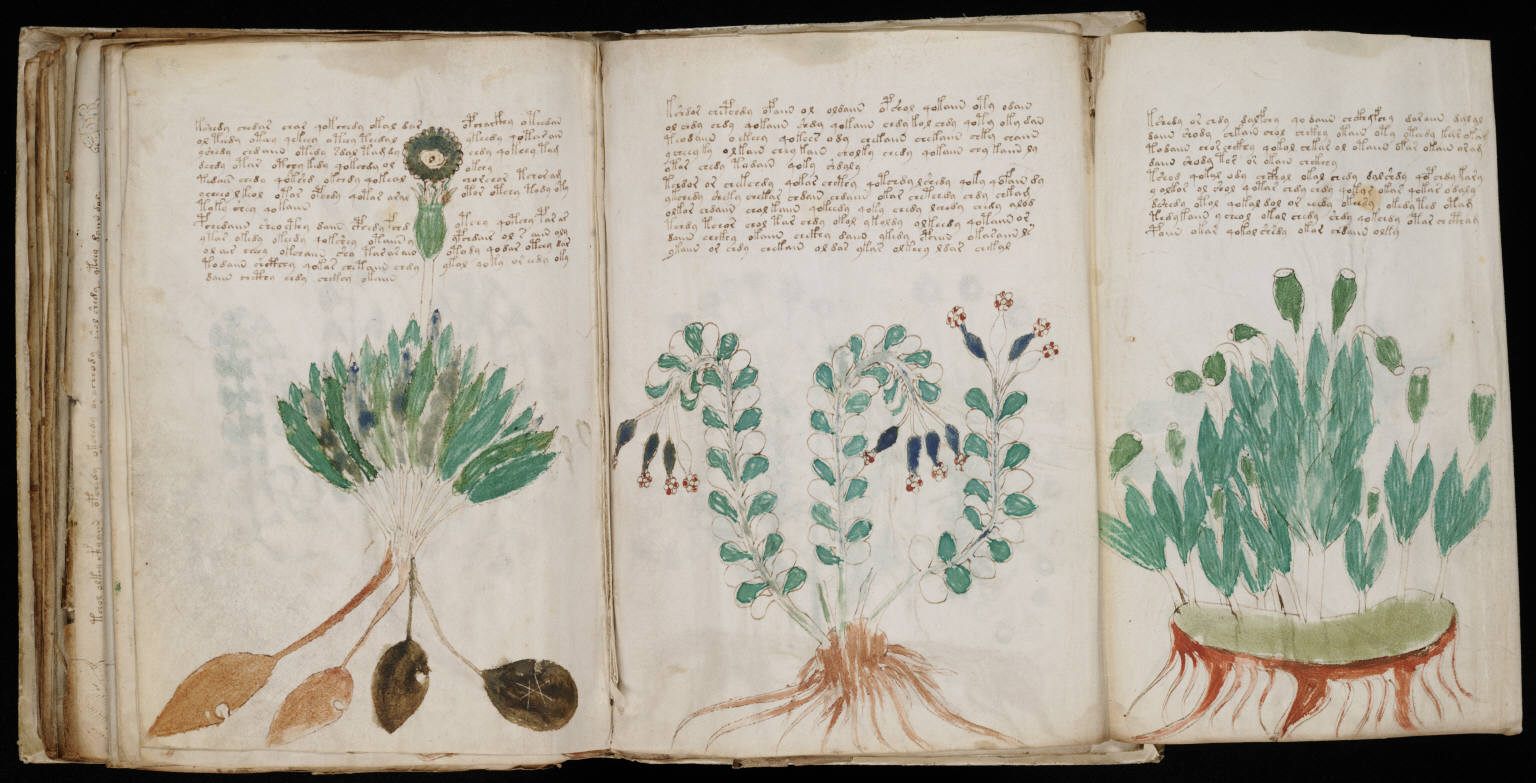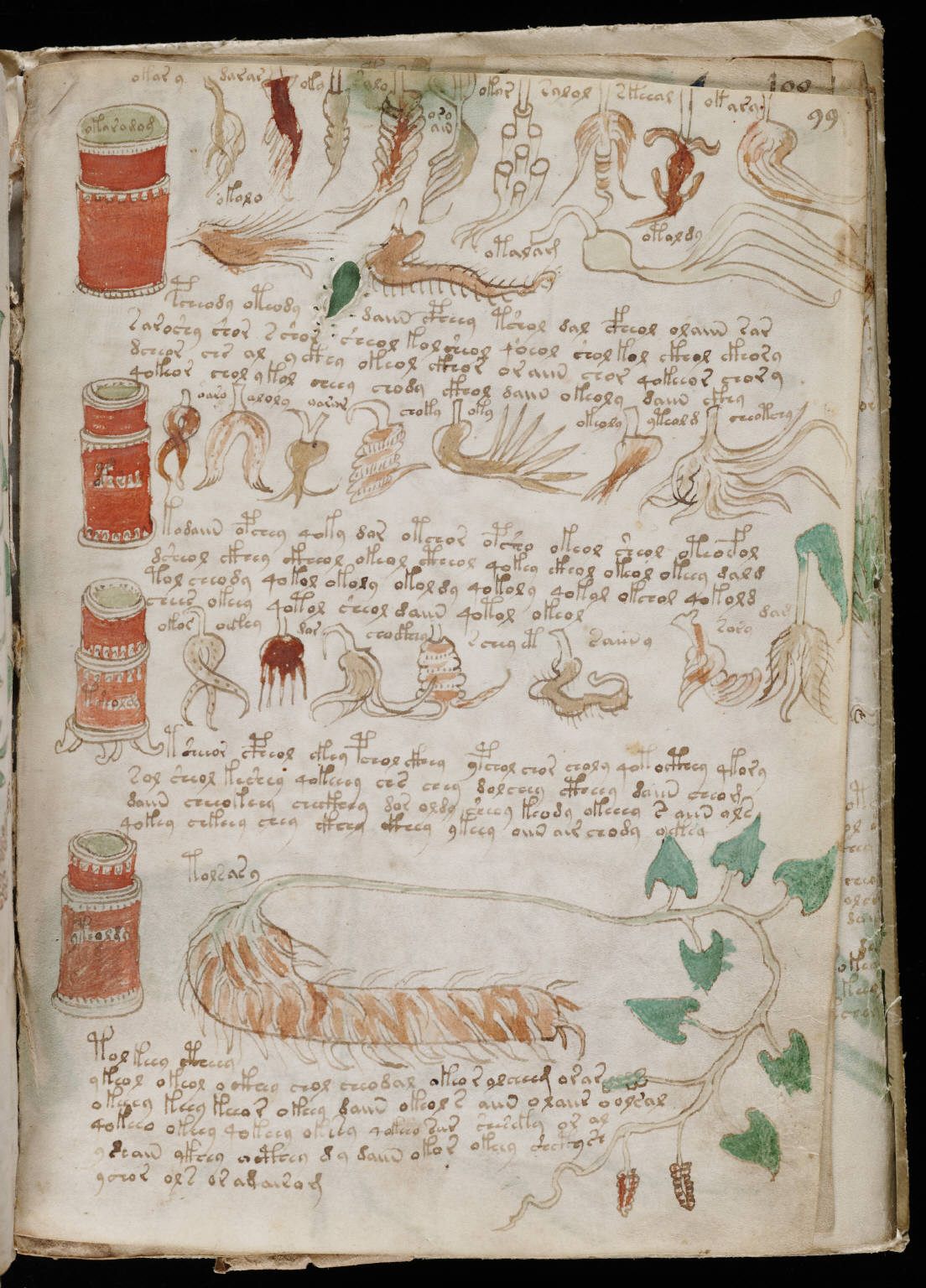Has Artificial Intelligence Cracked the Voynich Manuscript’s Mysterious Code?
Send in the bots.

An emotional investment in the Voynich manuscript offers little in the way of return. For hundreds of years, this 15th-century document full of indecipherable writing and cryptic illustrations has sat dark and inscrutable. Attempts to figure out its code tend to be swiftly debunked by the scholarly community, whether they’re as sensible-seeming as “It’s a woman’s health manual!” or as outlandish as “I think an alien did it.” Alan Turing and the Bletchley Park team’s attempts to decode it were unsuccessful. Now, at the University of Alberta, Canada, researchers have taken a new tack to try to illuminate the manuscript, named for 19th-century Polish bookseller Wilfrid Voynich. Where humans have failed, artificial intelligence is attempting to pick up the slack. It’s a predictably vexing development to medievalists and other experts.
Grzegorz Kondrak is almost the opposite of a medievalist. A professor of computer science, he came across the ancient mystery through the artificial intelligence community. In the past, he had worked on natural language processing, and was keen to apply some of the same techniques to the text. There are two problems with this notoriously difficult puzzle—it’s written in code, and no one knows what language that code enciphers. With graduate student Bradley Hauer, Kondrak used 380 translations of the Universal Declaration of Human Rights to systematically identify what the language used in the text might be. In the past, people have suggested everything from Latin to gibberish; Kondrak and Hauer thought it might be Arabic. Instead, the algorithms suggested an unexpected alternative: It looked to the computer like Hebrew.
“That was surprising,” Kondrak said, in a statement. “And just saying ‘this is Hebrew’ is the first step. The next step is how do we decipher it.” The scientists think the code used in the manuscript might have been created using alphagrams. (In standard alphagrams, the letters in a word are placed in alphabetical order—the alphagram of “alphagram,” for example, is “aaaghlpmr.”) Vowels also seemed to have been dropped. These assumptions made, they tried to come up with an algorithm to decipher this scrambled Hebrew text, to striking effect. “It turned out that over 80 percent of the words were in a Hebrew dictionary,” said Kondrak.

The challenge, however, was in trying to find out whether they made sense together. Hebrew scholars failed to come to the fore, so the scientists turned to a digital bastion of international understanding: Google Translate. After correcting a few funky spelling mistakes, that approach gave them a halfway decent first sentence, Kondrak said, which was interpretable and grammatical. According to all of these algorithms, the first sentence reads: “She made recommendations to the priest, man of the house and me and people.”
“It’s a kind of strange sentence to start a manuscript,” Kondrak said, “but it definitely makes sense.” Their work has been published in the journal Transactions of the Association of Computational Linguistics.
To a layperson, it might sound plausible—but already, Voynich experts and computer scientists alike are rolling their eyes at these recent efforts. Speaking to the Times of Israel, Hebrew-speaking data scientist Shlomo Argamon offered some excoriating feedback. “They are saying it looks more like Hebrew than other languages,” he said. “In my opinion, that’s not necessarily saying all that much.” The use of Google Translate, too, struck him as somewhat unscientific. “If you type in the letter ‘A’ 17 times, Google Translate will give you something that looks like a sentence if you squint hard enough.” Other scholars have raised doubts about the scientists’ use of modern, rather than medieval, Hebrew.
For his part, Kondrak seems unruffled by these interjections. “I don’t think [the academic community is] friendly to this kind of research,” he told the Canadian press. “People may be fearing that the computers will replace them.” Perhaps—though Voynich manuscript watchers may opt not to hold their breath.









Follow us on Twitter to get the latest on the world's hidden wonders.
Like us on Facebook to get the latest on the world's hidden wonders.
Follow us on Twitter Like us on Facebook